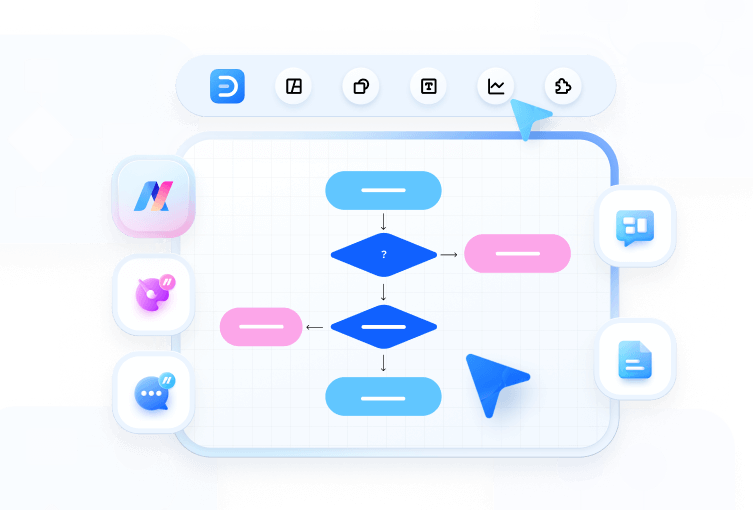How to Use Kanban

Part 1: What is Kanban?
Kanban, "billboard" in Japanese, is a project management tool used to visualize project workflows and identify potential roadblocks and bottlenecks. A typical Kanban will have three columns: "To do", "In Progress", and "Done". A "Bottleneck" column can also be placed before the "To do" column. Tasks are then written on post-it notes and stuck onto the relevant column.
Using a Kanban will allow team members to see the flow of tasks. Ideally, there should be a constant "flow" of tasks from one column to the next, as tasks are gradually completed and moved into the "Done" column. This allows project managers to see the progression of the project, which tasks are being held up, and if resources or time can be allocated to tasks that are being delayed.
Learn the differences between Kanban and Scrum.
Part 2: How to Make a Kanban Effortlessly?
How to make a kanban easily? Using EdrawMax to create your own kanban.
Step 1: Open EdrawMax desktop software or EdrawMax web-based application.
Step 2: Navigate to [New]>[Project Management]>[Kanban Diagrams]
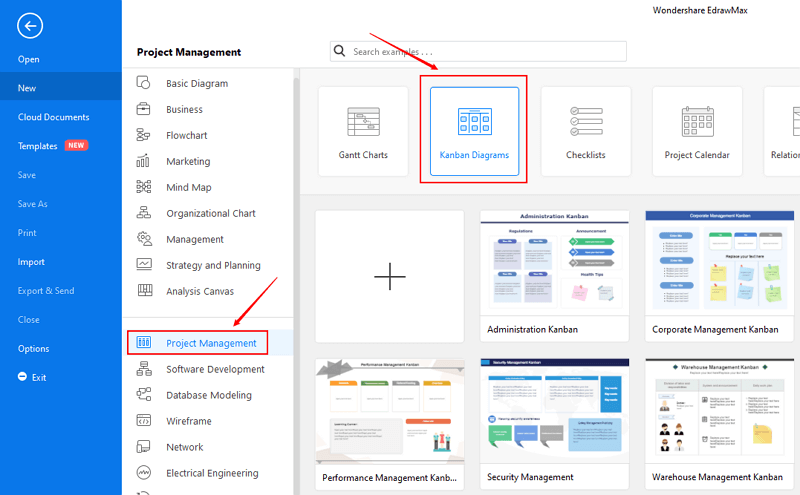
Step 3: Select one kanban diagram template to edit on it or click the [+] sign to start from scratch. Also, you can use massive kanban diagram symbols and elements from libraries in left menu to customize your kanban diagrams.

Step 4: Once finished your creation, you can export the file in multiple formats, including Graphics, PDF, editable MS Office file, SVG and Visio vsdx file.

Step 5: Besides, you can share your kanban diagram with others via social media and web page. Or publish your kanban diagram in EdrawMax template gallery to show your work with others.
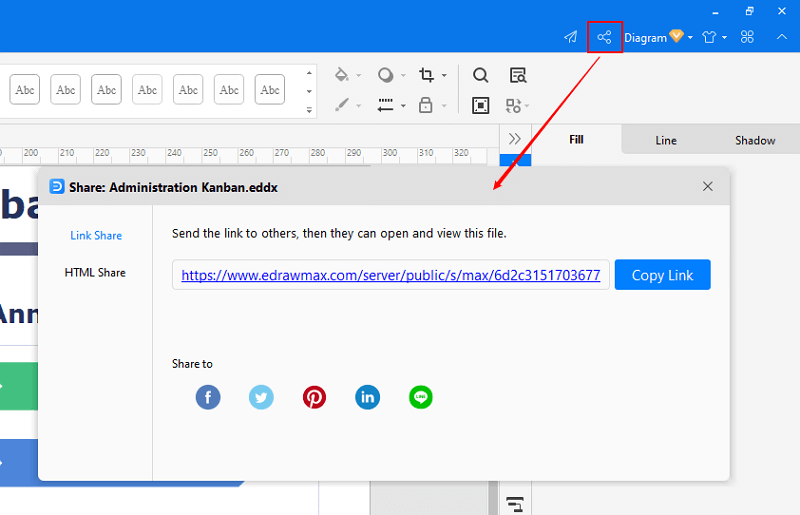
Part 3: Kanban Examples
Example 1: Blank Kanban
Kanban, "billboard" in Japanese, is a project management tool used to visualise project workflows and identify potential roadblocks and bottlenecks. This Kanban has five columns: Ready to Pull, Next, In Progress, Testing, and Done. Tasks are then written on post-it notes and stuck onto the relevant column. When a task has been completed in one column, it gets moved onto the next one, until it ends up in the Done column.
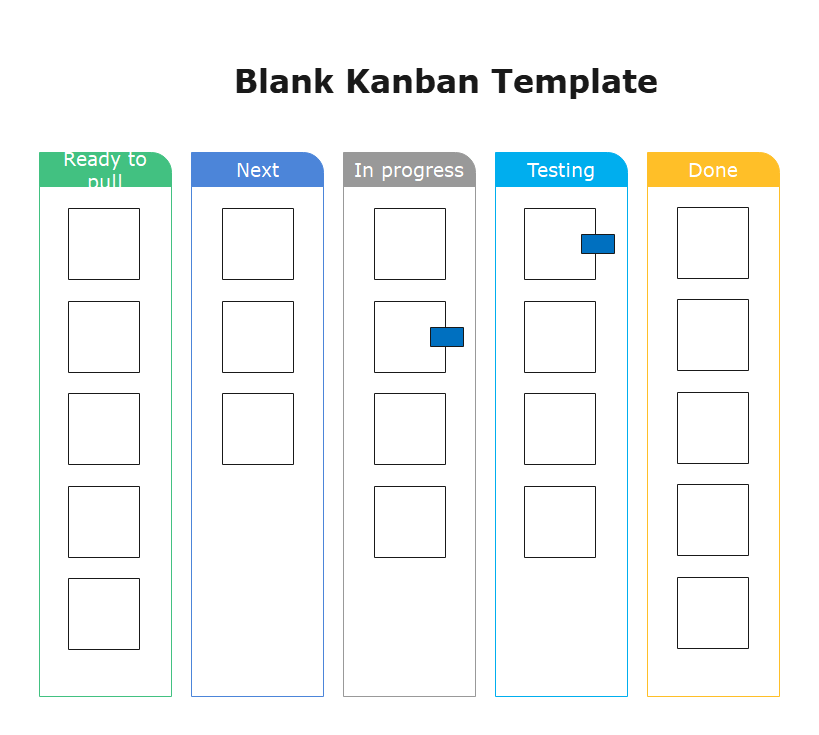
Example 2: Kanban Workflow
This Kanban has four columns: To-do, Do today, In progress, and Done. Once a task has been completed in one column, it gets moved onto the next one, until it ends up in the Done column. A Kanban is useful for visualising workflows and informing management of what tasks are outstanding, what has been completed, and what everyone’s responsibilities are.
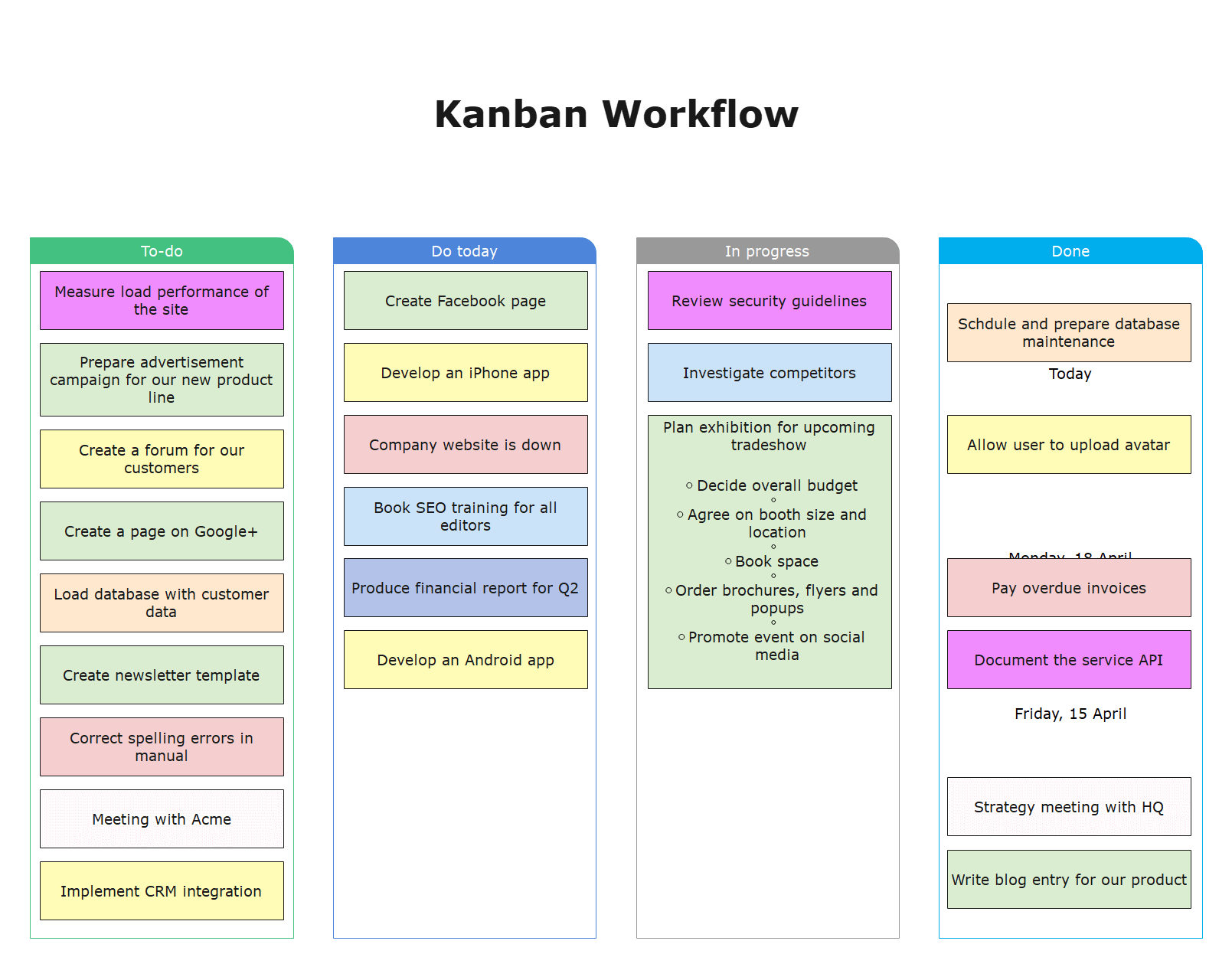
Part 4: Conclusion
According to this article, there are mainly three parts to illustrate what is Kanban, to tell you how to create kanban diagrams, and to show you some kanban examples.
EdrawMax is an easiest all-in-one diagramming tool, you can create kanban diagrams and any other type diagrams with ease! With substantial kanban diagram symbols and cliparts, making kanban diagrams could be as simple as possible. Also, it supports to export your work in multiple formats and share your work with others. Get started to create your kanban diagrams now!
